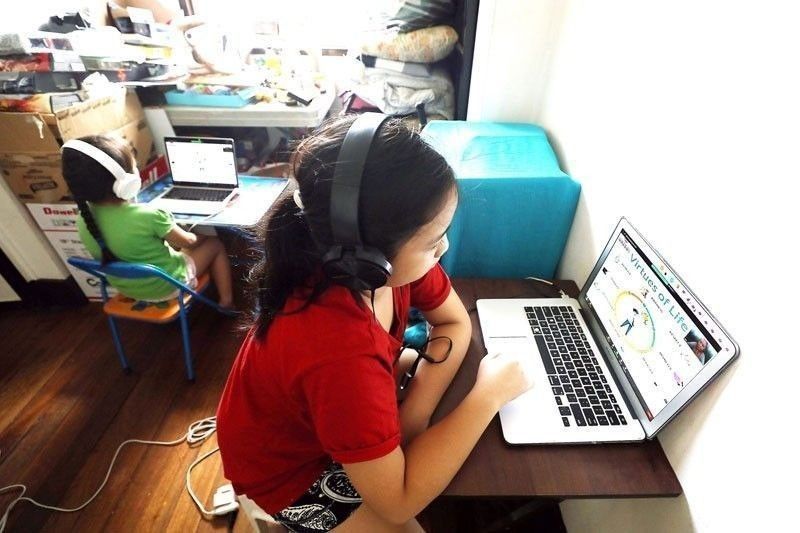Four of 10 Filipino students lack distance learning tech

MANILA, Philippines — About four in 10 Filipino students do not have any devices needed for distance learning, according to a recent survey by the Social Weather Stations (SWS).
The poll, taken from Nov. 21 to 25 last year, found only 58 percent of enrolled school-age – five- to 20-year-old – Filipinos who are using devices for distance learning.
These devices were already owned (27 percent), bought (12 percent), borrowed (10 percent), given (nine percent) or rented (0.3 percent), the SWS said.
The remaining 42 percent said they do not use devices for distance learning.
Among the 13 percent who bought or rented devices for distance learning, 79 percent got a smartphone, 13 percent got a desktop or laptop, five percent got a TV and three percent got a tablet.
The use of devices for distance learning was highest in Metro Manila at 96 percent.
It was followed by balance Luzon at 64 percent, the Visayas at 43 percent and Mindanao at 41 percent.
The percentage of those who use already owned devices was higher in Metro Manila and balance Luzon (36 percent and 30 percent) than in the Visayas and Mindanao (20 percent and 23 percent).
Only four percent of students in Metro Manila said they do not use devices for distance learning, much lower compared to more than half in the Visayas (56 percent) and Mindanao (58 percent) and more than a third in balance Luzon (36 percent).
SWS noted that the use of devices is more common among students in urban areas (67 percent) than among students in rural areas (49 percent).
SWS said the question on the means of acquiring devices for distance learning was directed to the household head.
The use of devices for distance learning is positively correlated with the household head’s educational attainment, it added.
The percentage of those who use devices is highest among students whose household head is a college graduate at 74 percent.
It was 67 percent among students whose household head has only some college education, 52 percent among students whose household head only has some junior high school and 35 percent among household whose household has some elementary education.
The survey also showed that families that bought devices spent an average of P8,687 per student.
The median amount is P6,800.
The survey used face-to-face interviews of 1,500 adults, 18 years old and above, nationwide.
The Department of Education (DepEd) has implemented blended learning for the school year 2020-2021 amid the COVID-19 pandemic.
Meanwhile, senators are seeking the immediate launch of pilot tests of localized and limited face-to-face classes in low-risk areas to avert further learning losses and other adverse social, developmental and health costs linked to prolonged school closures.
Sens. Sherwin Gatchalian, Nancy Binay, Francis Pangilinan, Grace Poe, Pia Cayetano, Joel Villanueva and Sonny Angara filed Senate Resolution No. 668, recommending that the pilot tests start in 1,065 public schools nationwide identified by DepEd in its risk assessment.
The senators said the pilot tests, which should follow the most stringent mitigation measures and health protocols, will help the DepEd gather on-the-ground evidence and design its framework for the safe reopening of schools.
While studies abroad show that schools are not the source of COVID-19 outbreaks, Gatchalian cited the need to gather local evidence that will give reassurance to learners, parents and other stakeholders in the education sector.
A global study of 191 countries, for instance, showed that there is no association between school status and COVID-19 infection rates in the community.
The US Centers for Disease Control and Prevention also emphasized that the return to in-person classes is possible as long as mitigation measures such as the wearing of face masks, physical distancing and increased room ventilation, among others, are observed.
Despite DepEd’s efforts to foster learning continuity while face-to-face classes are still not allowed, the quality of distance learning is still hounded by challenges such as limited preparations for educators, parents and learners.
Unreliable and expensive information and communications technology services are other gaps exposed in the rollout of blended learning.
To prevent adult-to-adult transmission in schools, the senators also recommended the prioritization of teachers in the COVID-19 vaccination rollout.
According to the United Nations Children’s Fund (UNICEF), the Philippines is the only country in the East and Asia Pacific Region where schools have remained closed since March 2020. – Cecille Suerte Felipe
- Latest
- Trending





























